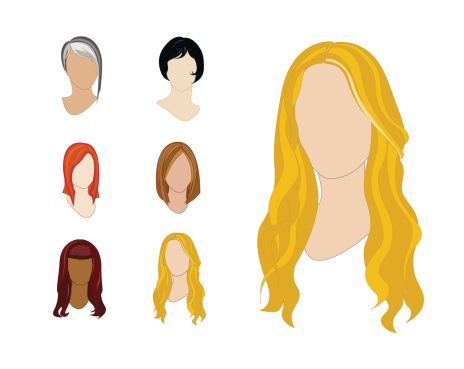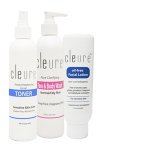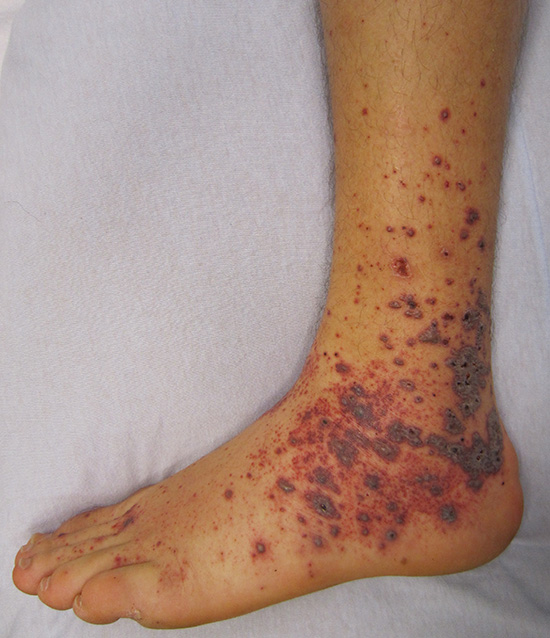Hypoallergenic Hair Dye
How to Have Beautiful Hair that Doesn't Make You Sick!
Forty-eight hours-that's the minimum recommended time for testing for sensitivity to hair dye, even hypoallergenic hair dye. Just because a label indicates that a product is "hypoallergenic" or "natural" doesn’t mean that people with allergies or sensitive skin shouldn't take precautions to ensure that they won’t have a reaction. Those comforting words have lulled many people into a false sense of security, often with terrible results.
If you are like most women, and many men, your hair represents your attitude toward your general appearance. When the color is drab or the gray starts getting more noticeable, it's only natural to want to give Mother Nature a little assist to brighten up your crowning glory and take a few years off. Unfortunately for some people, it can be a "sensitive" issue, and finding a reliable, effective hypoallergenic hair dye becomes a new priority.

Hair Dye, Allergies, and Sensitive Skin
Studies have shown that as many as 5% of all people who use permanent hair dye will develop an allergy to it. Some people have a reaction the first time they use a dye, but in many cases, the allergy develops after several previously successful applications. The reactions vary from mild to very severe, depending on the individual.
Mild reactions may occur in the form of contact dermatitis. The skin around the hairline and on the face, neck, eyelids, and top of the ears will become inflamed, swollen, and itchy. Ironically, the scalp will not always show a reaction because the skin is thicker and therefore more resistant to the irritants. Hair care professionals with allergies or sensitivities will experience reactions on their hands and arms.
On the more serious side, there have been cases where reactions to hair coloring have sent people to Intensive Care Units with severe burns and life-threatening edema, or swelling. In a few rare instances, hair dye has been the suspected culprit in cases anaphylactic shock, where victims have lapsed into coma, or even died. That's quite a high price to pay for just wanting look your best.
Sometimes a reaction will begin minutes after applying a hair dye, but other times it may take several days or even weeks for the symptoms to appear. It's generally the chemicals in hair dye that cause the problem, but even plant-based ingredients and other natural substances found in hypoallergenic hair dye can sometimes create problems.
PPD-the Most Frequent Offender
If you experience an allergic reaction, even a mild one, after you dye your hair, you should visit a dermatologist for a test to find out which ingredient is causing the problem. Looking at some of the labels you find on hair dye packages, it could be anything; you'd have to be a chemist to understand what it is you're applying to your hair. On second thought, if you knew what all those strange names were, you probably would prefer to keep it far away from your hair!
The main offender in most permanent hair dyes is a substance called para-phenylenediamine, or PPD. In a hair dye kit containing two bottles, PPD will be in one bottle and the other will contain an oxidizing substance such as hydrogen peroxide. When the two substances are mixed, the PPD is oxidized, creating the color. Unfortunately, this oxidizing process is also the stage where allergic reactions are triggered.
Sensitivity to PPD builds up over time. This is the reason that some people who have been successfully using hair dye for years can suddenly develop a reaction. For this reason, every time you dye your hair you should perform a patch test 48 hours ahead of time.
DIY Patch Testing
Of course, it goes without saying that if you have a history of severe allergies, you should have your dermatologist or allergist perform the patch test for you. On the other hand, if you only experience occasional reactions, or you have never experienced a reaction, you can do your own testing at home. Most packaging includes instructions on how to perform a patch test, but here are a few basics:
- The best place to perform a patch test is behind your ear or on the inside of your arm, in the crook of your elbow. Wash the area and dry it thoroughly.
- Mix a small amount of the developer with the color.
- Use a small wooden stick or a cotton ball to thinly apply the mixture to the prepared area. It should cover no more than a square inch.
- Cover the area with an adhesive bandage and give it about 30 minutes to "set."
- After 30 minutes, remove the bandage, but do not wash the area. Observe the area for 48 hours.
- After 48 hours, if you do not notice any irritation, redness, itching, blisters, etc., you have a negative response, and the product should be safe for you to use.
Note: If the area begins to show signs of significant irritation right away, for heaven's sake wash off the product to prevent further exposure and DO NOT apply it to your hair! This is a pretty good sign that your next step should be to try a PPD-free hypoallergenic hair dye. If you do end up with a reaction to your patch test, some people recommend dabbing whole milk on the area to soothe the irritation.
PPD Sensitivity Often goes Beyond Just Hair Dye
Some substances related to PPD can also cause a reaction in sensitive people, so anyone who has this allergy should also be careful when using products containing azo dyes, which are found in ballpoint pen ink, gasoline, diesel oil, and some coloring agents in food and medicine.
Benzocaine and procaine, local anesthetics commonly used by doctors and dentists, can also cause reactions in PPD-sensitive individuals. In addition, certain medications used in the treatment of TB can cause a reaction, as well as sulfa drugs, and sunscreens containing PABA.
Hair Dye Options for PPD Allergy
Some companies have begun manufacturing permanent and demipermanent hair dyes that use para-toluenediamine sulfate, or PTDS, instead of PPD. If you’re certain that the cause of your reaction is PPD, this could be an alternative solution because it has been successfully tested on a little more than half of users with PPD sensitivity. It may be worth patch testing products with this ingredient; you have a slightly better than 50-50 chance of tolerating it.
If you’re one of those people for whom any chemical is absolutely out of the question, you should investigate the option of hypoallergenic hair dye, which contains herbal and vegetable ingredients instead of chemicals. It can be a safer, healthier choice, but there are a few characteristics of hypoallergenic hair dye that some people consider to be drawbacks, compared to the typical brands of hair dye:
- The process is messier and takes longer.
- The coverage is not as complete.
- The color options are not as plentiful.
- The results are not as long lasting
For sensitive people who are determined to find a better color for their hair, this list could be considered short, and the prospect of more beautiful hair might overshadow the downside. It's still important to be careful, though; just because a label says "hypoallergenic" may just mean that there is no fragrance added. Do a little research and check labels carefully before you commit to a new brand.
There are currently quite a few companies out there that offer the option of hypoallergenic hair dye, so you have plenty of choices when you search for it at your drug store, your health food store, or online. I've put together a few of the brands that appear to be safe and also well liked here. Once you have decided to take the plunge, don't forget to do the patch test. It may be 48 hours of waiting, but it could save you immeasurable amounts of grief!
Home > Hair Dye Allergies > Hypoallergenic Hair Dye









New! Comments
Share your thoughts about what you just read! Leave me a comment in the box below.